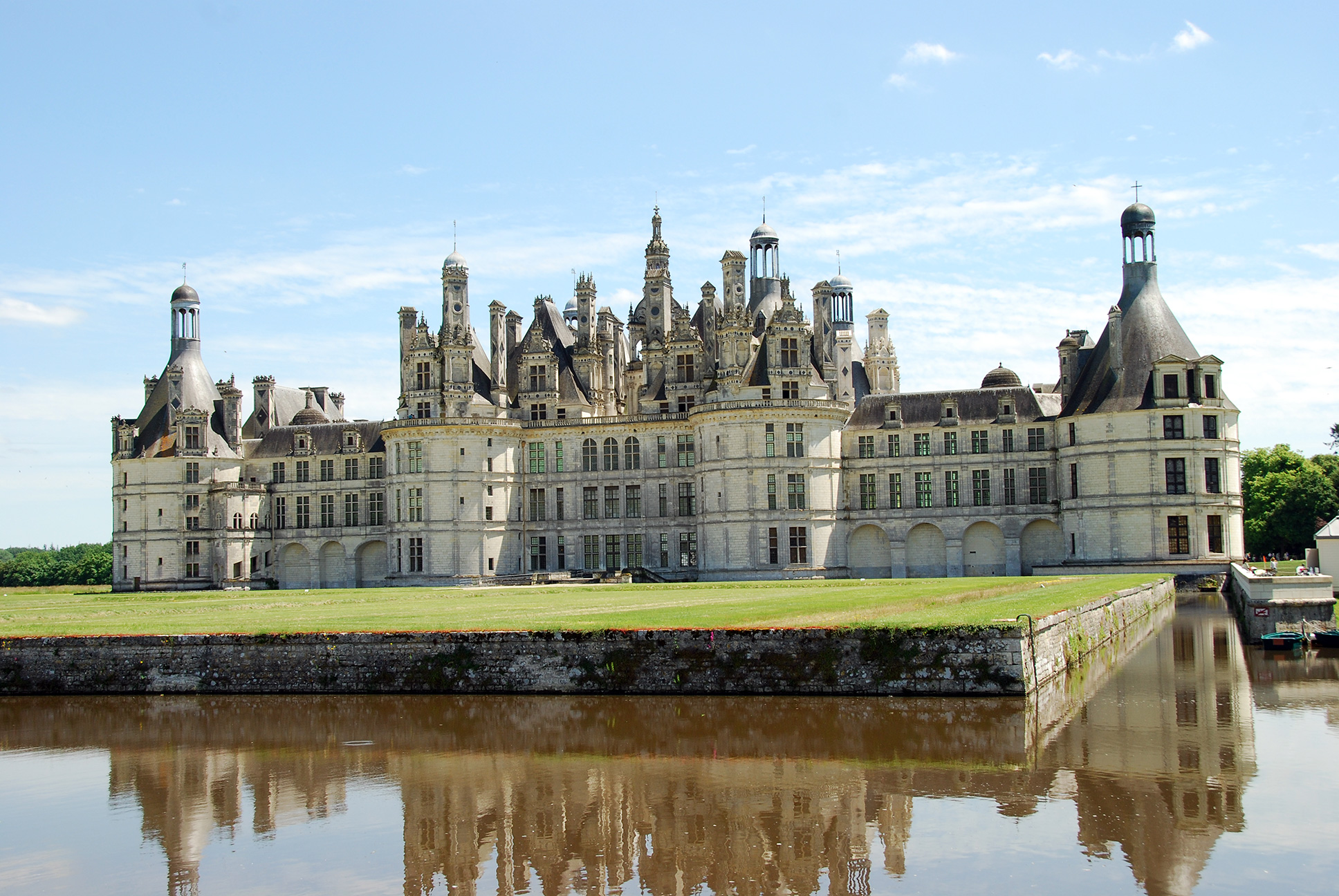History
At the heart of a great forest stands Château de Chambord, built by King Francis I, a medieval knight and Renaissance philosopher. Built as a royal hunting lodge, workers began clearing the area to construct the castle in 1519. The castle resides near the fertile valley of the Loire River in the heart of France, both geographically and spiritually. Specifically, this region was where a century of war with England occurred, and the idea of France as a nation took shape. Eventually, the enemy was turned back at this location, and kings and queens of France would build the most beautiful castles in the world.

In 1515, Francis succeeded his cousin to the throne. Shortly after his coronation, he left to regain the Duchy of Milan territory within the Holy Roman Empire, previously lost by his family. Today, this region comprises part of northern Italy. During his stay in Milan, Francis saw firsthand the works of various Renaissance artists and architects. He even persuaded the aging Leonardo de Vinci to accompany him to France with his famous painting La Gioconda, better known as the Mona Lisa.
Several years later, King Francis was captured and held captive by the Holy Roman Emperor, Charles V, in Milan from 1524 to 1526. As a result, construction at Chambord was halted during this period. Following his release in 1526, he continued the expansion of the castle by adding wings to each side of the keep. The East Wing houses royal apartments, and West Wing the Chapel. In 1535, the Donjon, or central keep, was completed. A historical meeting occurred at Chambord in 1539 when during a truce between Francis and his rival, Charles V, who was invited to visit Chambord. During the week-long celebration, Charles was so impressed he declared Chambord and all its trimmings "a synthesis of all that human effort can achieve."
Construction of the Royal Wing was completed in 1547, the same year of King Francis' death, which marked the end of the golden age of the Loire Valley. Although the royal family relocated to Paris after that, the King's son, Henry II, continued construction on the castle, which was used occasionally as a Royal Hunting Lodge. Henry's legacy remains in the form of his monogram "H" on various columns within the Chapel. Thereafter, Château de Chambord remained predominantly vacant for the next 400 years.
For a brief time in the 17th century, when King Louis XIV reigned France, he stayed at Chambord more often than any other French monarch. On October 14th, 1670, Molière presented his comedy, Le Bourgeois gentilhomme, for the first time, at Chambord in the presence of the King and court. Louis completed the construction of the Chapel Wing in 1685, adding the roof and vault. He also built the King's Bedchamber within the central keep.
During the French Revolution, Chambord was looted, and furniture was sold, but the castle escaped destruction.
The State has owned the castle since 1930. In 1939, thousands of works of art were sent from museums in Paris to eleven castles and abbeys in central and western France, including Chambord, to escape destruction or theft by the Nazis. Chambord was the largest of the depots to house artwork. Leonardo da Vinci's Mona Lisa, Delacroix's Liberty Guiding the People, and The Lady with a Unicorn, were all hidden in Chambord during this time.
Today, craftsmen and stone masons continue restoration work on the castle.
Castle Highlights
Château de Chambord represents one of France's most widely recognized Chateaux due to its distinctive French Renaissance architecture, which combines French medieval and Italian Renaissance features. With its many turrets, dormers, and towers, the château has been likened to both an overcrowded chessboard and a woman whose long hair was blown loose by the wind.
Architecture within Château de Chambord bears the marks of Leonardo de Vinci. The large spiral staircase in the center of the Donjon or keep is two staircases wrapped around one another. A person can ascend while another descends without ever passing each other. The original plans included four intertwined staircases, but builders simplified them to have only two. Unique terraces along the rooftop were constructed so ladies of the court could watch hunts in the nearby forest and admire the gallantry of their lords.
Francis' chosen emblem was the salamander, a symbol of devotion and integrity. It is depicted no less than 800 times within Château de Chambord. Due to its vast size, Château de Chambord, in conjunction with its unoccupied status for long periods, meant that furnishings were sparse, with most rooms empty. Furnishings were usually brought with the Royal court during visits and removed upon returning to Paris. However, some furnishings, including the bedchamber from Louis XIV, remain, consisting of the bed and tapestries.
Château de Chambord is the largest castle in the Loire Valley, with 440 rooms and 365 fireplaces. The castle and grounds can take an entire day to visit, especially if walking the grounds. However, if only half a day is spent touring the castle, Château de Chenonceau is close enough to see the same day.
Château de Chambord is also haunted.



